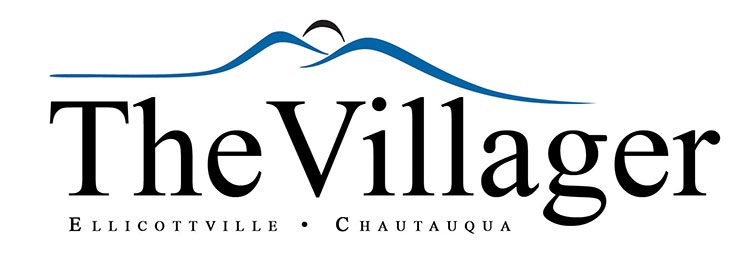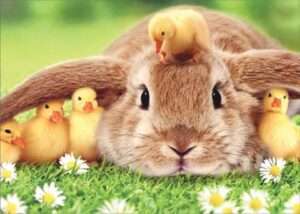By Carol Fisher-Linn
Easter is one of those holidays filled with traditions, some of which have been around for centuries. While Christians celebrates the resurrection of Christ, giving us the symbols of palms and crosses, a good number of our symbols are secular, or a combination of both. Take the Easter Bunny for example. It seems that somewhere in old German lore, there was a legend about an egg-laying rabbit. In somewhat the same manner that the old-world traditions spawned Groundhog Day, the story of the “Osterhase” the egg-laying hare, also found its way to Pennsylvania when those first Germans arrived there in the 1700’s. To accommodate the egg-laying hare, the children made nests in which the critter could lay its fabled eggs which, appropriately, were already colored as they arrived. Eventually, in America, straw-filled baskets replaced the straw nests. My research revealed nothing about the exact origins of the egg-laying hare, but one thing is for certain, rabbits are an ancient symbol of new life and fruitfulness because, after all, the little creatures multiply like magic!
So, let’s talk about those colored eggs that the egg-laying hare delivered. It seemed those colored eggs were hard to find, even though legend says he left them. Since Easter is a Christian holiday, the egg became a symbol of Jesus’ coming out of the tomb and his resurrection. The egg is a symbol of new life. It encloses embryonic life which emerges and continues the cycle of life. The shape of the egg also refers to the never-ending cycle as it has no beginning or no end. Perhaps back in the 13h century when parents couldn’t find the fabled colored eggs from the fabled egg-laying hare, they colored them at night when the kiddoes were asleep so they could find them when they awakened? One thing we do know for certain is that, for Christians, eggs were forbidden food during the 40-day Lenten season. They had to keep the fast perfectly, abstaining from everything which is killed and the fruit and produce of them as well. Remember, there was no refrigeration back in the days when those old robed, bearded patriarchs were setting the rules. The nice thing about eggs was they did not spoil quickly so when Lent was finished, the people had a healthy supply of eggs that the hens had been laying throughout Lent. Of course, they gave them as colorful gifts! Another legend to the coloring of eggs, aside from the egg-laying hare was the due to the legend about Emperor Caesar summoning Mary Magdalene to him when he heard that Christ had been resurrected. In the story he said to her “Christ has not risen, no more than that egg is red,” after which, allegedly, the egg miraculously turned blood red. When you view the amazing colored and decorated European eggs at Buffalo’s Broadway Market, you will undoubtedly notice that red is a very dominant color. They may not be Faberge eggs that Tsar Alexander presented to his wife, but the intricate detail of those European eggs is equally as beautiful.
Would you be surprised to learn that Easter is the second best-selling candy holiday in America after Halloween? Chocolate eggs have been around since the 19th century. Jellybeans, on the other hand, have only been around since the 1930’s with over 16 billion made in the U.S. every Easter. Now, you can’t talk Easter candy without including the beloved Peeps! Say thank you to Russian born immigrant Sam Born who began handmaking and selling yellow marshmallow flavored chicks in the 1950’s.
Speaking of yellow, no self-respecting Easter table is complete without the traditional Easter butter lamb, symbolizing Jesus, who is also called “The Lamb of God.” White lilies are ubiquitous at Easter, symbolizing Christ’s purity and his rebirth or resurrection, just as the bulb lays dormant in the ground and then comes to life. Tip: If you give them at Easter, please check the allergy status of the recipients.
It just wouldn’t be Easter without the Easter parade which, in NYC dates to the mid-1800’s when the socialites would stroll along Fifth Avenue after church, showing off their new spring hats and outfits. Who remembers the 1948 film “Easter Parade?” The title song includes the lyrics: “In your Easter bonnet, with all the frills upon it/You’ll be the grandest lady in the Easter parade.”
Happiest of Easters to all of you!

